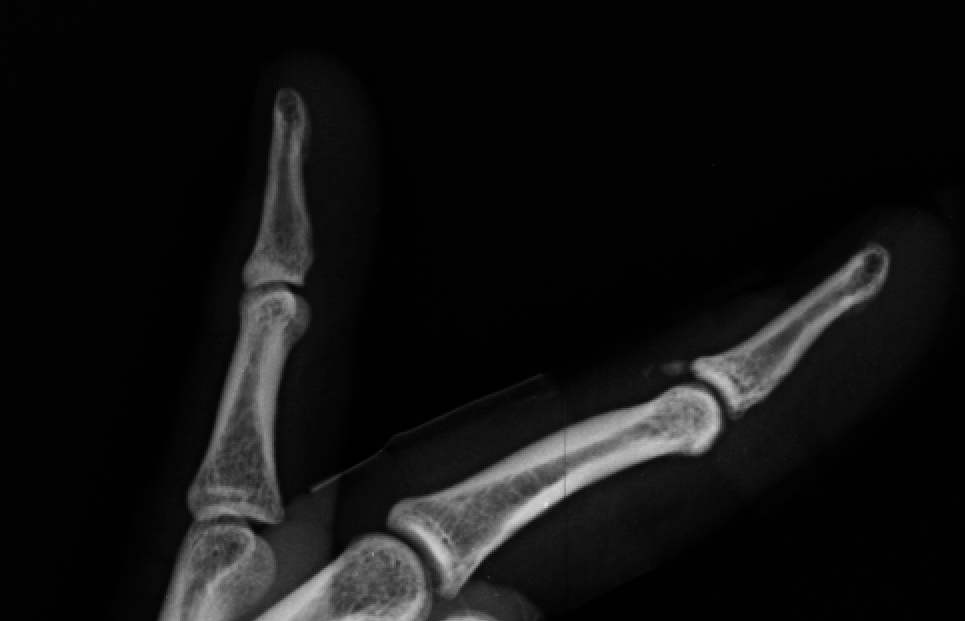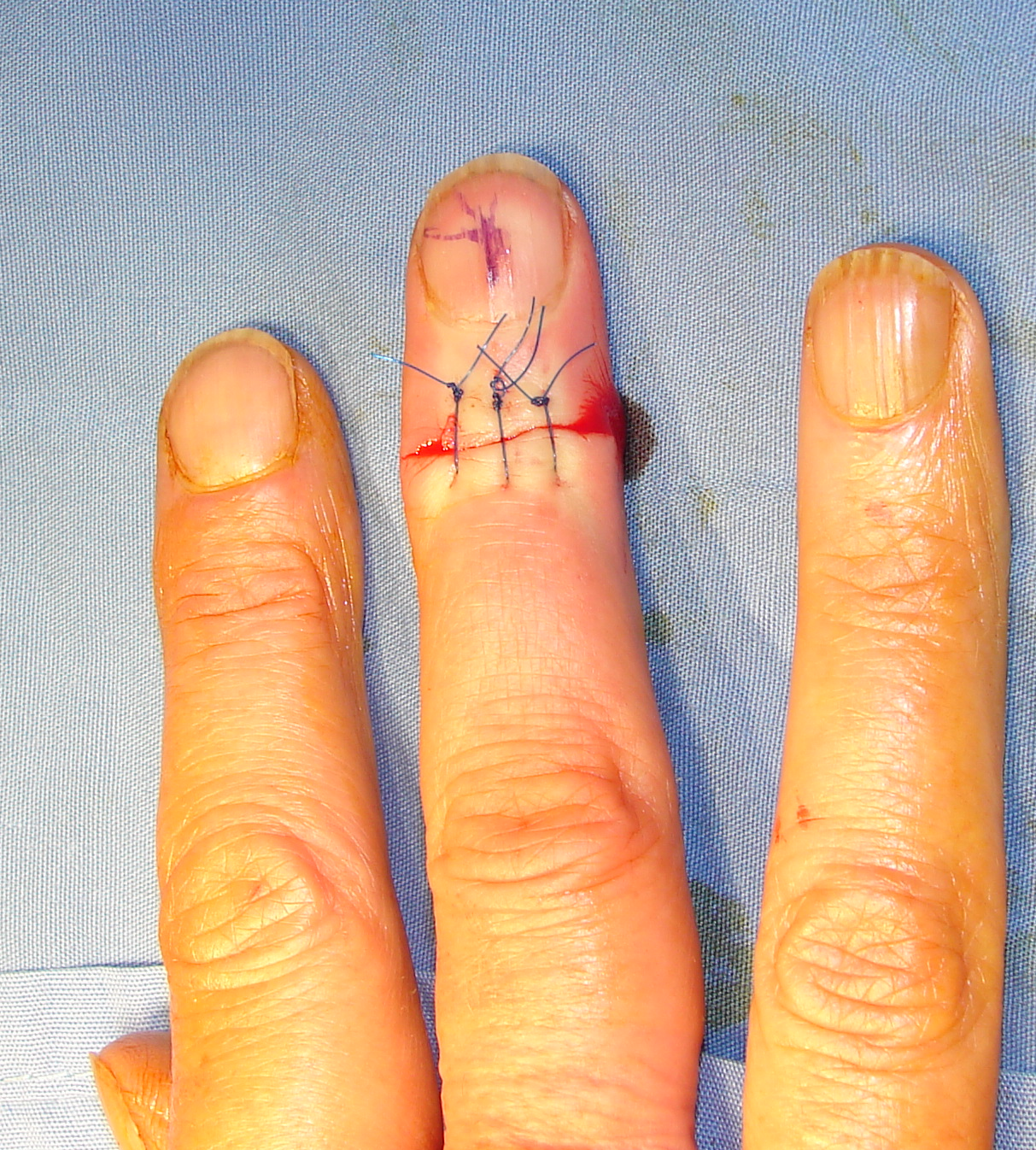Mallet finger
Mallet finger describes a type of injury where there is disruption or stretching of the extensor mechanism of the finger at the finger tip joint (DIP). It is the most prevalent finger tendon injury in sport. It also goes by the name of Jers
Doyle's Classification of Mallet Finger Injuries
Type I
- Closed injury with or without small dorsal avulusion fracture
Type II
- Open injury (laceration)
Type III
- Open injury (deep soft tissue abrasion involving loss skin and tendon substance)
Type IV
- Mallet fracture
A = distal phalanx physeal injury (pediatrics)
B = fracture fragment involving 20% to 50% of articular surface (adult)
C = fracture frament >50% of articular surface (adult)
Clinical presentation
It is characterised by an inability to extend the finger at the distal interphalangeal (DIP) joint. There is slight flexion at this joint, which is where the term "mallet" comes from - the finger position resembles a mallet (for example, a piano key mallet).
The injury classically occurs while playing sports where the DIP undergoes sudden flexion e.g. netball or basketball or a crush injury (slamming a door towards the distal interphalangeal joint) in the extensor direction.
Radiographic features
Plain radiograph

If there is a bony avulsion, a plain film will classically show a triangular bonyavulsion fragment at the insertion of the common extensor tendon on the dorsal aspect of the distal phalanx at the DIP joint.
A high proportion of mallet finger injuries will present as isolated tendon injuries without any associated avulsions fractures known as a "mallet fracture".
Ultrasound
The findings on ultrasound include:
- loss of real-time movement of the tendon
- complete or partial extensor tendon tears
- fluid in the region of the extensor tendon insertion
- avulsion fracture
Treatment and prognosis
Mallet injuries are predominantly conservatively treated via a splint maintaining the DIP joint in fixed hyperextension. This can take 6-12 weeks our therapists offer custom made thermoplastic splints.
Complications
- untreated mallet fingers may progress to a Swan neck deformity that will require surgical intervention
- development of secondary arthritis
Surgical Treatment
- untreated mallet fingers may progress that will require surgical intervention
- In Acute fractures we can fix these with Local or General Anaesthesia
- We have a wealth of experience in Tenodermodesis which is a soft tissue treatment for failed other interventions.

